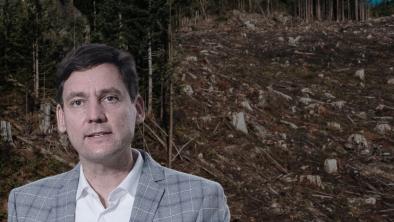Future of Pinecone Burke Provincial Park hinges on plan expected in 2015
Wednesday, November 12, 2014
The Straight

B.C. Parks accepting public input on development of draft management plan
VETERAN ENVIRONMENTALIST ELAINE Golds likes to look out over the Coquitlam River Watershed, knowing that old-growth trees are preserved within its boundaries.
Golds, chair of the Burke Mountain Naturalists’ education and conservation committee, told the Georgia Straight that her favourite vantage point lies at the top of the Coquitlam Lake View Trail. It’s just one of the hiking trails in the popular Burke Mountain area at the southern end of Pinecone Burke Provincial Park.
“You’re up there and you feel like you’re miles away,” Golds said by phone from her Port Moody home. “That’s a really wonderful feeling: that you can get out and, after a half-hour hike, you feel like you’ve left the city behind.”
In the early 1990s, Golds campaigned for the protection of the largely remote area west of Pitt Lake, between Coquitlam and Garibaldi Provincial Park. When Pinecone Burke was established as a 38,000-hectare Class A park in 1995, she thought it would have a management plan within a couple of years.
Nineteen years later, the provincial government has finally initiated the management-planning process for Pinecone Burke, which lies in Katzie First Nation traditional territory. B.C. Parks is accepting public input via the web, email, and postal mail until November 30 on the development of a draft plan, which is scheduled to be released for comments in spring 2015. The final plan is expected to be prepared by next summer.
The terms of reference for the planning process identify several key issues in Pinecone Burke, including archaeological sites, species at risk, backcountry access and facilities development, commercial float planes, snowmobiling and cabins on Burke Mountain, and adjacent land-use planning by the City of Coquitlam and Metro Vancouver.
Vicki Haberl, B.C. Parks’ planning section head for the South Coast region, noted that Pinecone Burke lacks a “grand entrance” welcoming visitors and pointing them to facilities. She told the Straight she’s interested in finding out whether the public believes there’s a “great opportunity” for snowshoeing in the park.
“It’s almost like it’s a park in waiting,” Haberl said by phone from B.C. Parks’ office at Alice Lake Provincial Park in Squamish. “It’s time to determine what the vision is for that park in the long term and what it should look like in the future.”
According to Golds, park users would benefit from the construction of parking lots with washrooms at the Harper Road and Quarry Road entrances. She doesn’t believe a campground is needed on Burke Mountain.
Golds maintained that Widgeon Valley should remain cut off from vehicle access and be accessible mainly by canoe and kayak from Grant Narrows. She’d like to see improvements made to the “gorgeous” Widgeon Falls Trail, which has fallen into disrepair.
B.C. Parks should hold public meetings in Vancouver and Coquitlam as part of the initial public-input period, Golds argued.
“The other really big issue for this is that we get a management plan—and then what?” Golds asked. “Is there a budget? Parks are starved for funds these days. We don’t even have proper trail signage or even a parking lot. There’s nothing there—absolutely nothing—and that’s pretty abysmal for a park that’s been around for 19 years.”
Karaleen Gioia, vice president of the Tri-Cities Off Road Cycling Association, told the Straight that mountain bikers are the largest group of park users on Burke Mountain. She noted that about a dozen trails in the “special” area offer terrain for all skill levels.
According to Gioia, TORCA hopes B.C. Parks will endorse this trail network, which was built and is maintained by the mountain-biking community but is also used by hikers and dog-walkers.
“The network that is there right now, I think, is about what is required,” Gioia said by phone from Port Moody. “You can’t go much less than that or you start to intensify the user traffic too much on one or two trails. Whereas when they are nicely spread out, it helps for maintenance and the ongoing longevity of the trail.”
At his Vancouver office, Wilderness Committee national campaign director Joe Foy showed the Straight a copy of the 1994 final report of the province’s Pinecone Lake–Burke Mountain study team. Foy was a member of the team, which recommended the creation of the park.
In the early ’90s, the New Westminster resident helped build the 50-kilometre Fool’s Gold hiking route through the park’s secluded Boise and DeBeck valleys in order to raise awareness of the value of this “true wilderness” and its old-growth trees. He said he would love to see B.C. Parks adopt the rugged route, which is now overgrown.
Foy stressed that “private interests” should be kept out of the park. He hopes the management plan will dedicate Pinecone Burke to self-propelled outdoor recreation and restrict snowmobiling and other motorized activities.
For Foy, it’s important that the park offer opportunities for youth to experience nature and learn about First Nations culture.
“As every generation experiences the world differently,” Foy said, “I think it’s important that, as a society, we think of ways to provide access to wild nature so that the people who live in the Lower Mainland continue to develop a culture around a life lived full of experiences in wild nature.”
Photo: Joe Foy,Wilderness Committee National Campaign Director


